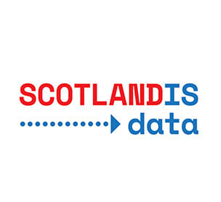Read the latest monthly blog from our Head of the Data Cluster, David, as he reflects on the capabilities of data within space tech.
Watching NASA’s newest Mars Rover Perseverance carry out its planned tasks within the current mission has been amazing. Acting as a communications base station for flights of the Ingenuity Mars Helicopter and now starting to utilise its robotic arm to carry out rock examinations has been a great example of the complexity and flexibility of the assets and equipment being used on this mission.
The connection and interaction of multiple camera and sensor systems producing data flows feeding back via a robust communications system from a distance of 140 million miles is staggering. The reliability, efficiency and accuracy of the equipment operating in such a remote and hostile environment is testament to the quality of design and build delivered through a hugely complex supply chain. Each new set of data received helps to further map the planet, gain a better understanding of its composition and history, and improve the success of all future missions.
In Scotland we are currently witnessing our own version of the Mars Mission. In addition to being the only European country to have full end to end capabilities for small satellites, there is a growing sector utilising the data being captured by satellites. The remote sensors are the satellite cameras and companies such as Space Intelligence, Leidos and Planetary AI are using satellite imagery to create a better understanding of the landscape and by doing so create subsequent positive outcomes. The images are capturing land use, environmental impact, geological information, and energy wastage. Some users are utilising a mixture of technologies and combining the output to enable more accurate analysis and ultimately more valuable applications.
Terrestrial mapping applications and geospatial services from companies such as Thinkwhere Ltd, Comharra Solutions Ltd and member organisations such as AGI are all using the collection of data and its subsequent analysis to understand what is happening on our planet and help in the creation of solutions to slow down the effects of change through historic data analysis. Throughout these activities, data is being captured and not only used for current applications abut also saved for improving future applications.
The delivery model based upon utilising remote sensors to capture accurate data and utilising the data to map the past and present can also be seen in the health and social care sector. Within the Scottish market there are a number of businesses developing and delivering health and social care service offerings remotely including StormID, AlanaAI and DHI. The development of wearable tech allows health data to be captured and analysed to identify any potential issues. Any variation over time in the output data can assist in post event diagnosis or alternatively as a predictor of future issues it can assist in the development of healthcare plans. The roll out of the 5G network across Scotland increases the opportunities to implement remote service offerings and health monitoring. The wider the coverage and the more individuals involved helps to improve the effectiveness of the delivered services.
Activities
In the past month ScotlandIS have presented at “Exploring Artificial Intelligence Market Opportunities in Germany and Scotland” organised by Germany Trade and Invest in cooperation with KI BUNDESVERBRAND and Scottish Development international on Thursday 22nd April.
In addition, we had a joint Industry Insights event with DHI on Tuesday 11th May exploring the Digital Health Marketplace.
On Tuesday 1st June, as part of the North East Data Meetup, we are running an event on the Scottish Space sector with PlanetaryAI and Orbex. Please contact me at david.ferguson@scotlandis.com for details.

